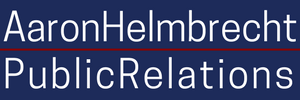It's good to have a tortoise on your team. The tortoise wins the race.
Aaron Helmbrecht, Communications Strategist
|
I once had a client tell me I worked too slow. She said I was a tortoise and she needs me to be the rabbit. I said it's good to have a tortoise on your team. The tortoise wins the race. For this client, optics mattered. She hired me to be in charge of something very important to her and she wanted to see me on the phone closing deals and yelling at people to get stuff done. Boiler room stuff. There is a time and place for boiler room stuff, but that’s just the side dish of the communications table. The main course is a focus on fundamentals. A focus on fundamentals may not sound like a sexy communications plan, but something I learned from working with veterans is – I prepare to win, and I don’t want a fair fight. I want to stack the odds so heavily in our favor that before I even clock in, I already know that we’ve won. Here’s where you start if you’re a small organization without a dedicated Communications Department. Style GuideYou absolutely need a style guide. Our brains are designed to detect patterns. Style inconsistencies will be noticed by your audience and it will be a distraction that undermines your key messages. If you don’t have a style guide, start with the AP Stylebook and add an appendix with amendments that suit your organization’s preferences. Use amendments sparingly. When you amend AP Style, you may be changing the meaning of words in a way that you do intend. AccessibilityAccessibility means making sure that everyone, including individuals with disabilities, can interact with and understand your content. If you receive federal funding for programs and activities, accessibility is not optional. It is required by Section 508 of the Rehabilitation Act. However, accessibility is so much more than just the right thing to do. It’s what’s good for business. Accessibility improves the overall user experience for everyone, not just individuals with disabilities. Accessible content is easier to navigate and consume for all users, especially on mobile devices or in low-vision environments. Search engines also favor well-structured, accessible content. Proper tagging, alternative text, and descriptive links improve your content’s searchability, making it easier for people to find. Following best practices for accessibility ensures that your content will reach the widest possible audience. Key Performance IndicatorsTo find out if our investment in style and accessibility has paid off, we need to track key performance indicators (KPIs). Choose your KPIs based on the user journey and the call to action of your message. Generally, I recommend tracking open rate and clickthrough rate for emails, impressions and engagement for social media, and pageviews and conversions for websites. If we can write better emails, we will get a higher clickthrough rate. If we can make better websites, we will get a higher conversion rate. And conversions are how we put points on the board.
|

